This is the third and final day of our planned navigation down the Baja peninsula, 300 miles long toward our final destination of El Sargento. The day didn’t disappoint in the variety of landscapes, topographies, roadways, and cities.
On this day we start in Playa el Requeson, wind our way through the mountains along Bahia Concepcion, cross the peninsula to the Pacific coast, and cross it once again toward La Paz on the Sea of Cortez, eventually ending up in the destination town of El Sargento.
The sunrise on the beach at Playa el Requeson was as breathtaking as any.
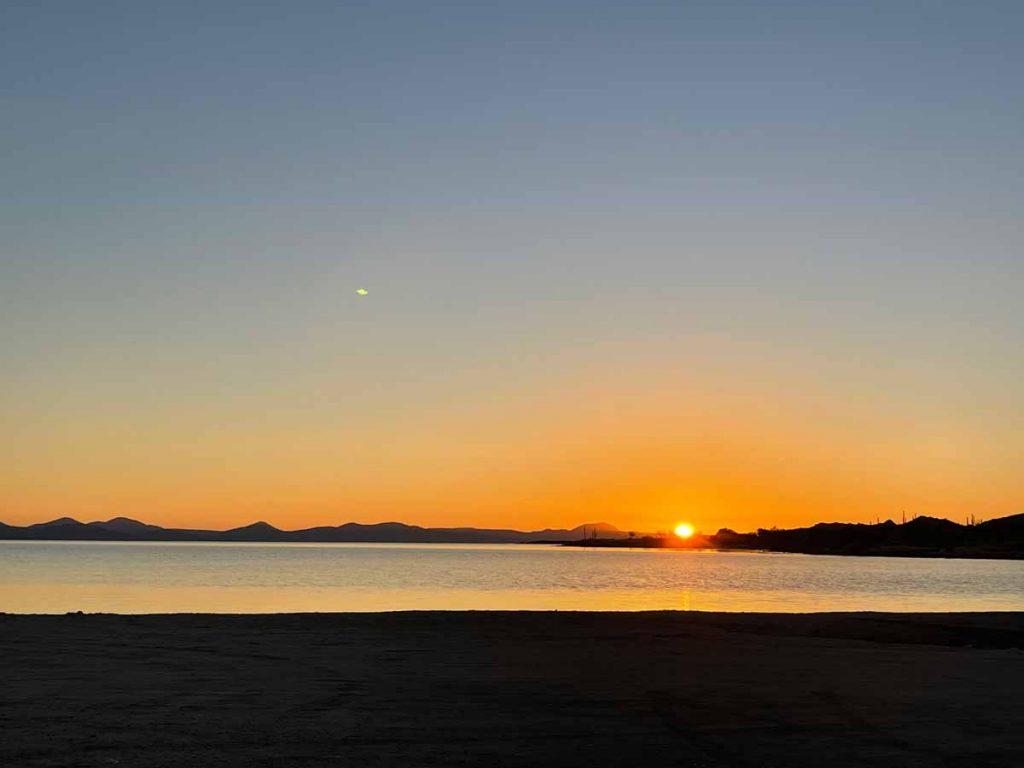
The meditative calm of the bay gently rousing, eased us into the long driving day ahead.
After breaking down camp, we began winding our way along the coast in a South Easterly direction, with the mountains on one side and the bay on the other.
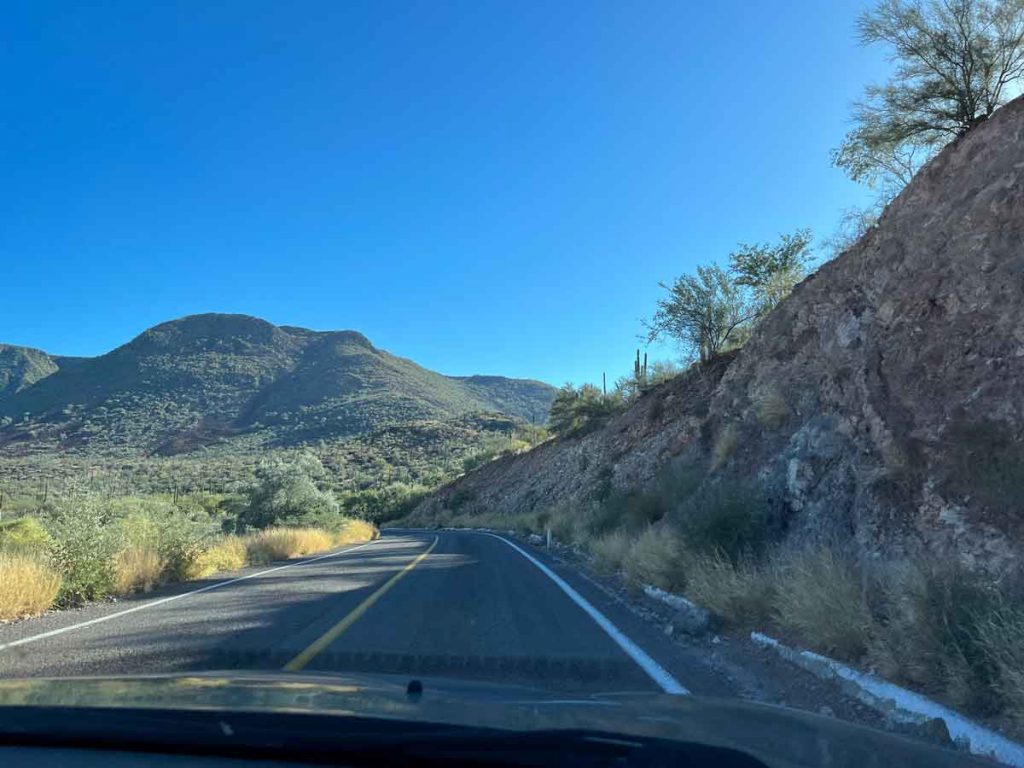
This day required a significant amount of focus, looking out beyond each twist and turn, with shoulders expecting to respond to a rock slide, an errant cow, horse, or a burro, I was unable to get lost in the beauty on display on each side of the road.
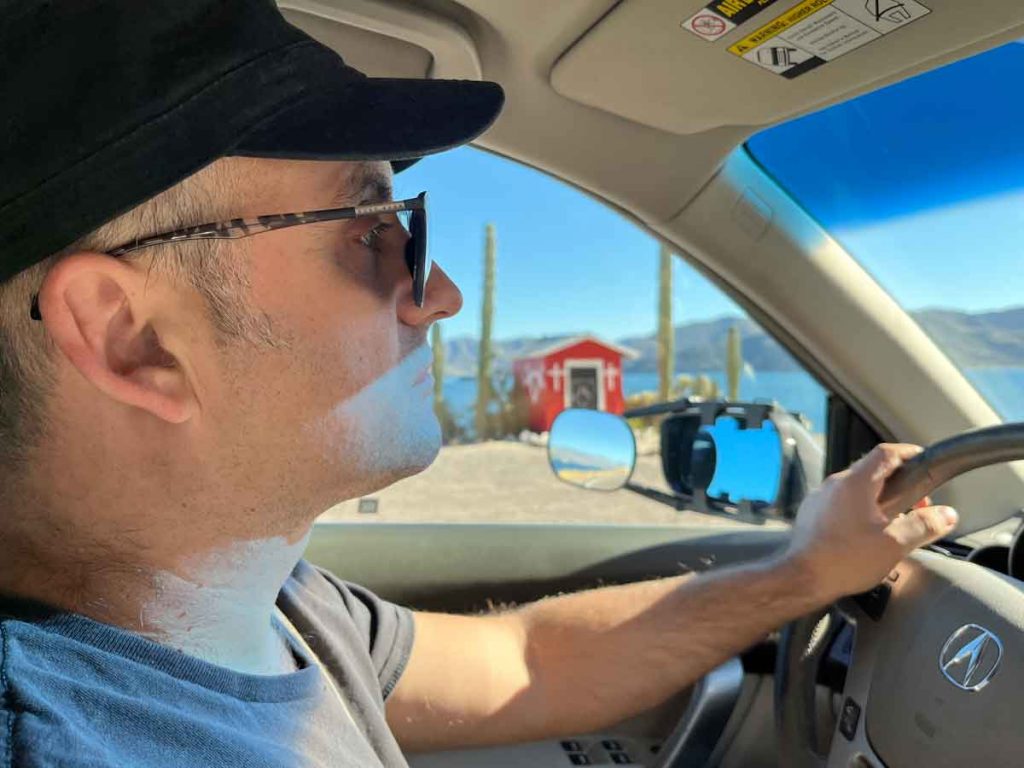
Loreto was one of the last towns that we passed on this leg of the Sea of Cortez side, before turning South West to make our next zag toward the Pacific.
Prior to deciding to stop at Playa Requeson, Loreto was supposed to be our previously planned stopping destination for day two. However, a nice Canadian couple at our Guerrero Negro stop, told us that they themselves had trouble finding a spot to stay in Loreto, with all of the city’s RV parks being completely full there, so it was just as well that we stayed at the beach last night.
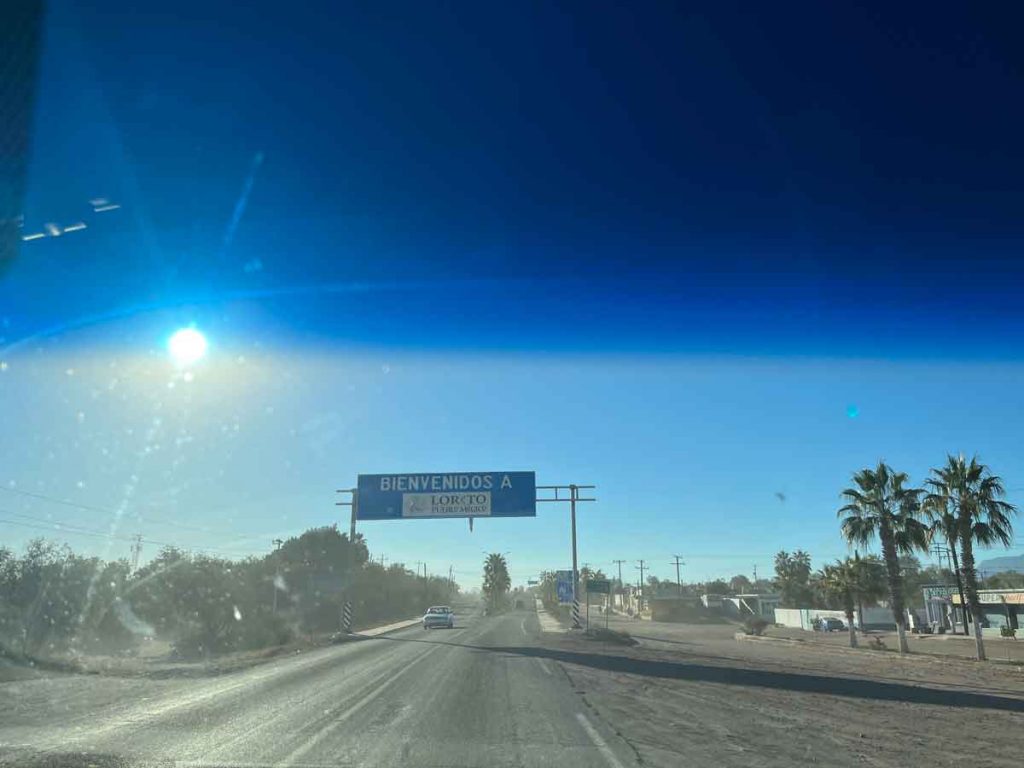
Beyond Loreto, we turned onto the South West leg, which would require that we traverse a mountain pass which had several exciting attributes, as if it was vying to get listed as one of the “most dangerous roads of the world”.
Steep climbs, crumbling shoulders, and shear cliffs requiring trust in one’s vehicle, and a sprinkle of hope that somehow it will all work out.
Beyond the peak of that pass, we experienced a beautiful downhill coast into a foggy valley, before the surroundings once again turned into a dusty desert landscape.
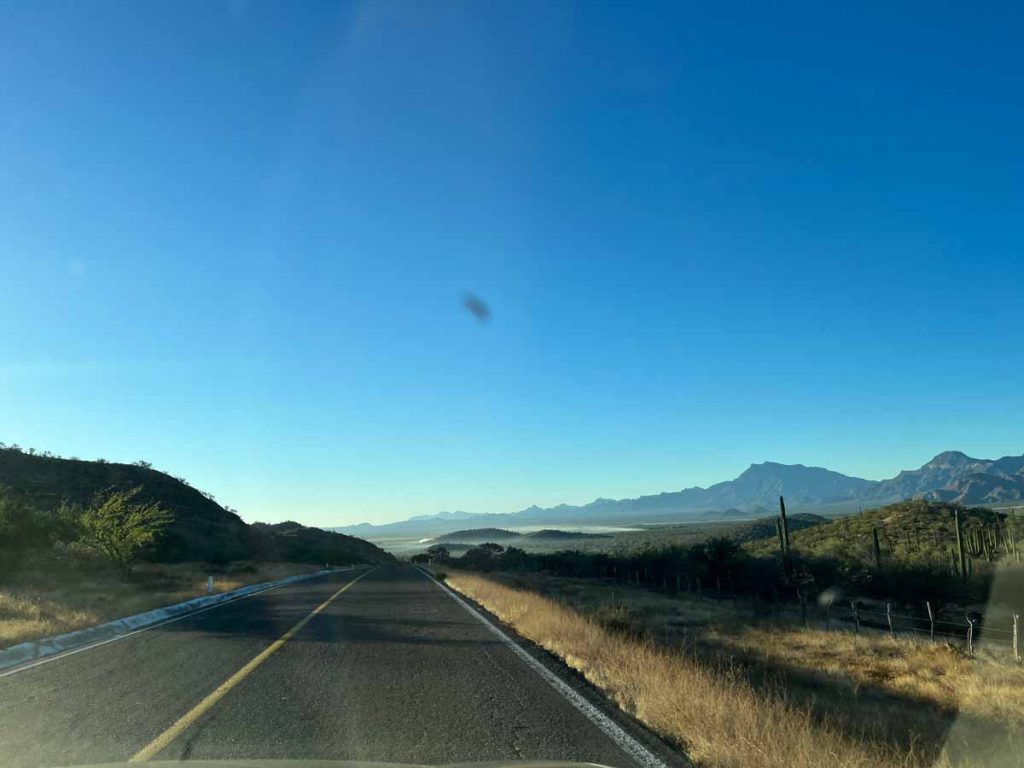
The midpoint of the day is the hot and dusty city of Constitucion, a city designed for the maximum amount of possible traffic violations, a honey trap to to catch oblivious travelers.
The thoroughfares leading into the city, wide, capable of supporting high speed traffic, and clearly unmarked with speed limits. When they are marked, they drastically reduce the speed for no apparent reason, and proceed to have no corresponding sign that returns to the original speed limit, so that you never know how fast you should be going. To combat this trickery, I devised a strategy to look in my rearview mirror to identify the edges of the speed restriction by finding the reduced speed limit sign going in the opposite direction.
The main thoroughfare through the center of town is a stop sign maker’s and a traffic cop’s wet dream. It is a couple miles, though what seems like a hundred blocks of 8 way stop signs. It is a free for all of local cars crossing, most not obeying the posted signs.
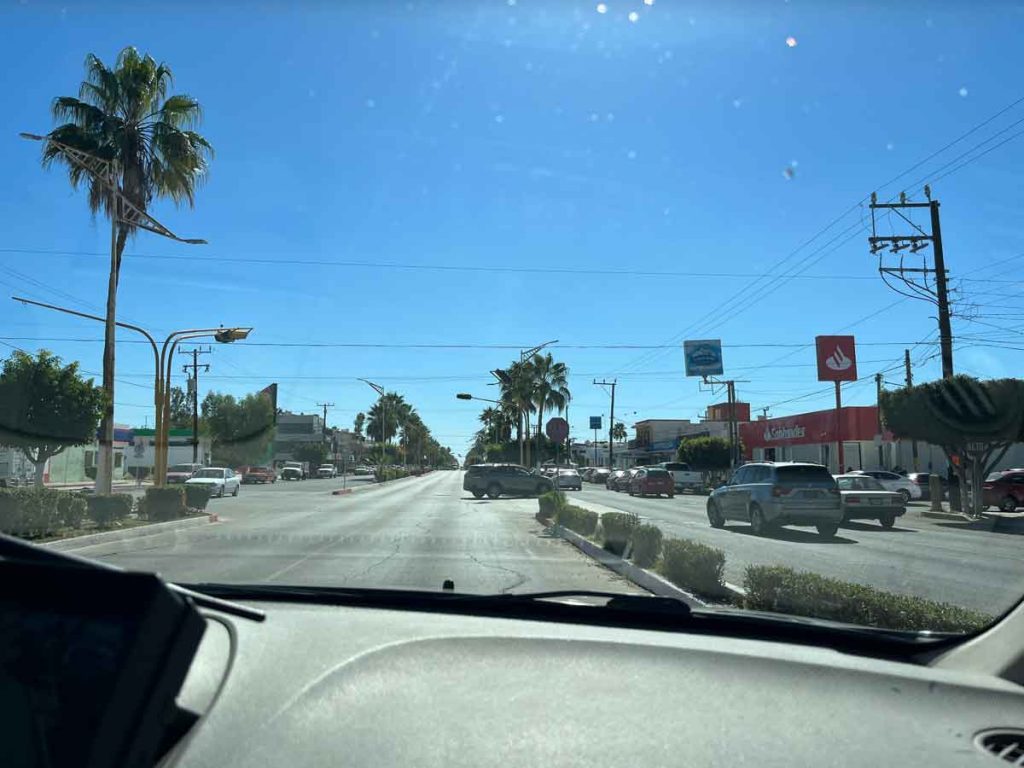
As a visitor, my intent is to give no authorities the pleasure of a roadside conversation, with my every stop executed fully, and recorded as proof on multiple dash and rearview cameras. Each stop was obviously designed to wear a weaker traveler down, creating endless opportunities for just one slip up. With the diligence of a German bureaucrat, I made it through every single one of them, stopping for at least one second, ensuring that the cameras caught the motion of the bumper lift.
As you can imagine, I was grossly disrupting the flow of local traffic, and ensured that the maximum number of locals got annoyed at this gringo’s insistence.
A stretch of road of this length normally could have been crossed in five minutes, but following the letter of the law in this manner, took nearly an hour to traverse.
Beyond Ciudad Constitucion, the speed limit rose to 110km/h, the highest that we have seen so far, shooting us straight into La Paz in about two hours.
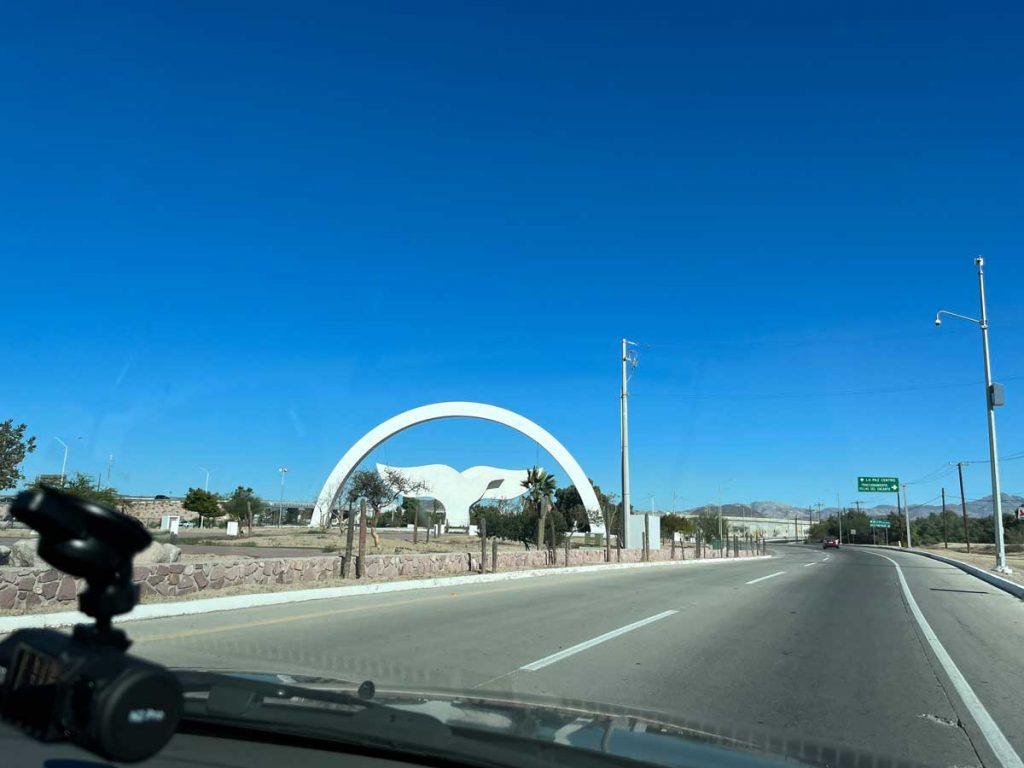
La Paz is the most populous city in Baja California Sur, and it is also the setting of Steinbeck’s The Pearl, with its rich history of pearl oyster harvesting in the bay.
While in La Paz, we stopped at one of the larger grocery stores that were rumored to have organic and vegan food, though the rumors were largely unfounded, as was the food.
While getting into La Paz was easy, getting out of it proved more difficult. With Google directions beginning to show us a preview of how bad Google Maps really are in this part of Mexico.
With our friends excited to get to our final destination, by now only an hour away, the technology navigation machine took us all along a circuitous route, impossible to follow, one that would separate our caravan for the remainder of the trip.
One of my number one pet peeves with Google maps, is that it weighs a left turn the same as a right turn, and so it did in this instance, guiding us to take a left onto an eight lane thoroughfare in bumper to bumper traffic. A feat marginally possible on a scooter, impossible in a car, and delusional with a trailer.
Eventually we made it out of the traffic snarl, by taking a right, driving for miles to get out of traffic, then doing a “u-turn whenever possible” back into the traffic from whence we came.
The road from La Paz to El Sargento is a pleasant climb over a mountain, then a long descent revealing the beautiful bay below.
Once you get into town, there are english signs above store fronts, dusty jeeps, camper vans, and ATVs loaded with kiting equipment, and kite schools on every corner. Gringo is here.
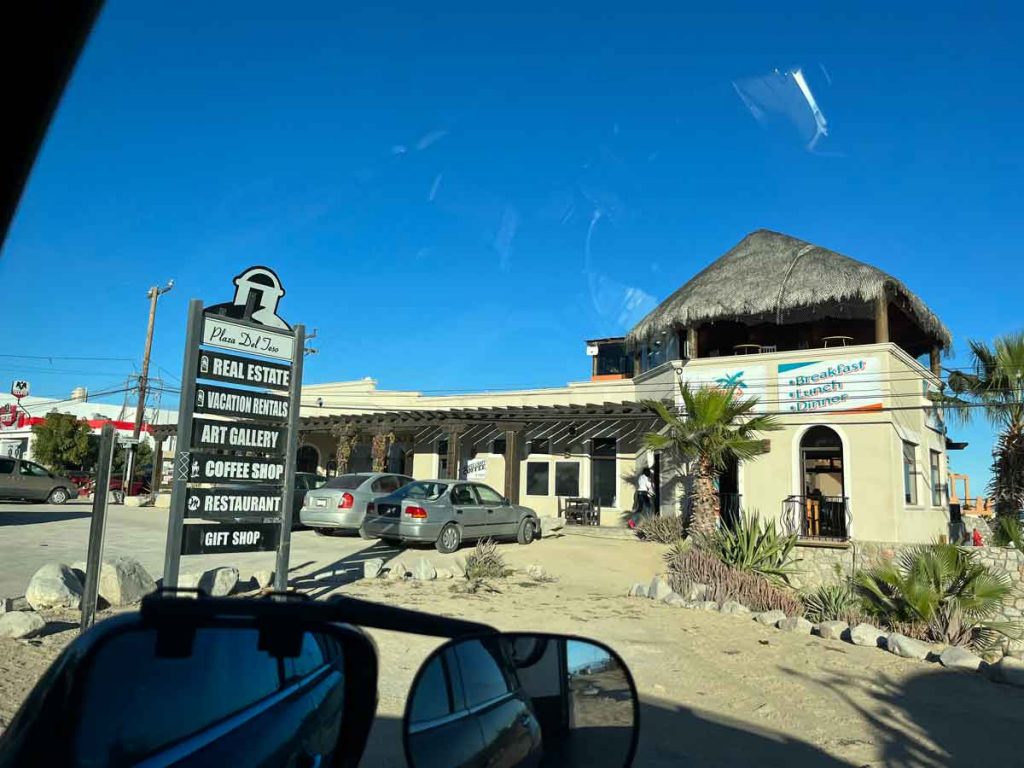
Not exactly knowing where we were going, we turned to our Google navigation machine once again for directions, and turned left from the main drag, and up one of the dusty roads, none being paved other than the main one through town.
Slowly we crawled up the road until the dodgy Google machine told us to turn into the bushes. I’m not that dumb, Google! I parked the rig, and took a walk down the indicated “road”.
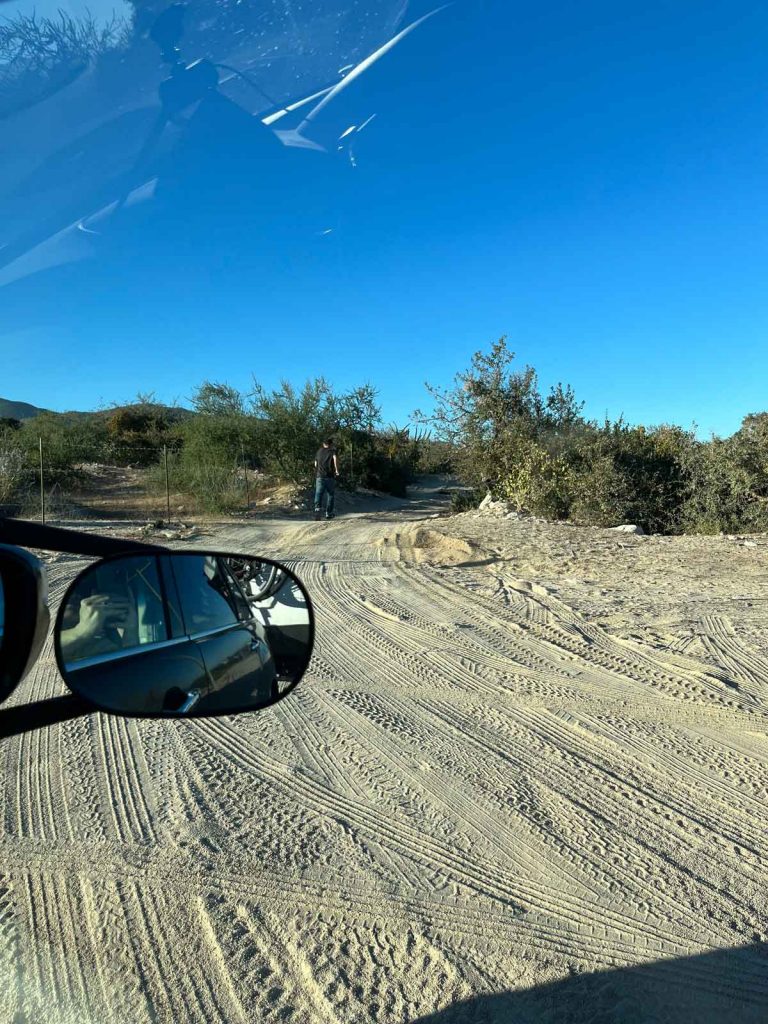
It seemed to go on for a while, so I got back in the car, and told Lisa, “I guess it’s a road…” and drove in.
Ok, I am that dumb.
We made it down this “road” maybe a couple hundred yards, both sides of the trailer kissed by the uncleared brush, and only as far as the first turn. The turn, too tight for us to make without impaling the trailer on a fence post, left us with two alternatives. Instead of taking the turn, we could go forward and make our own road in the sand and chaparral before attempting a wider turn, or we could back up the entire way.
Now practiced in the skill of backing up long distances, I was OK with taking on the challenge, though this time at an increased level of difficulty by being in sand, and without the foot of margin on the sides of the rig that we had when I backed into our friend’s compound in Pasadena the previous week.
Thankfully it didn’t take me long to back up, though swearing all the way, the words to the song accompanied by the amateur violinist sound of twigs resonating against the side of first the trailer, followed by the car in a different tone.
Eventually having made it out, we got in touch with our friends who had received superior instructions to our destination, ones that the Google machine did not yet believe existed on the chart.
Getting on the right road, our next obstacle was not far ahead, first requiring us to wait for a bovine stampede to come down from the opposite direction, passing us on both sides with no apparent care that we were there. Once the stampede concluded we continued on.
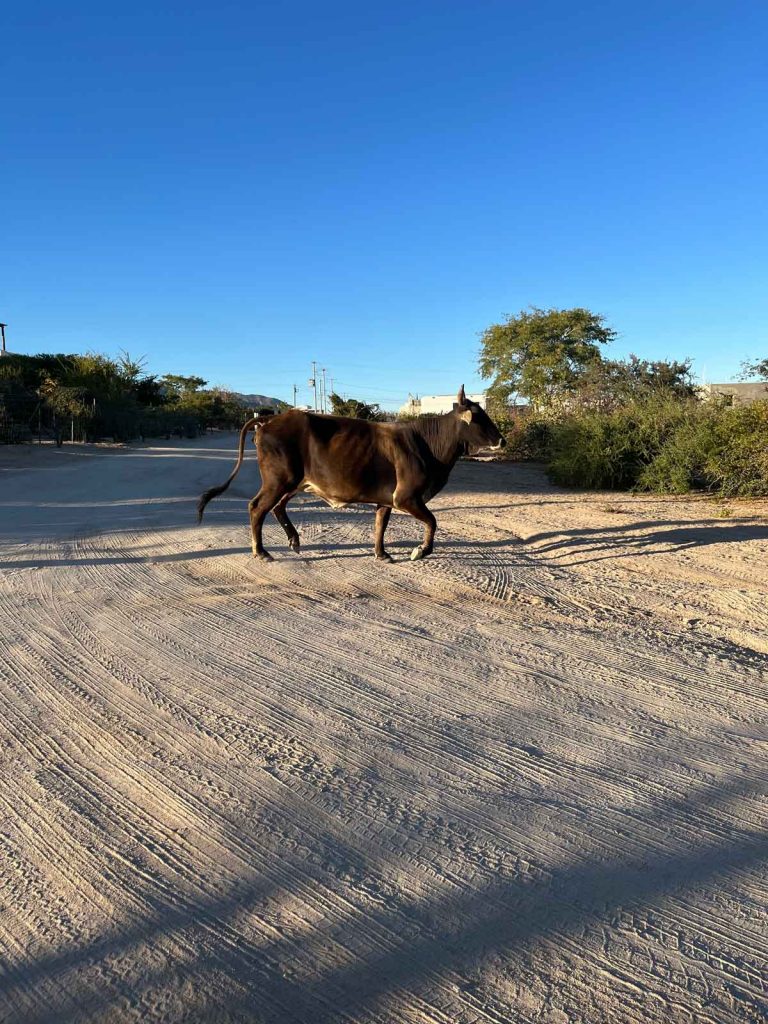
When we finally arrived, we were greeted by the owner of the RV park, Captain Vic, an avid sailor, and frequent skipper of Hornblower cruises at our old stomping ground of Marina Del Rey, ships that I have long become accustomed to avoiding, upon hearing their 3 short horn blasts indicating astern propulsion.
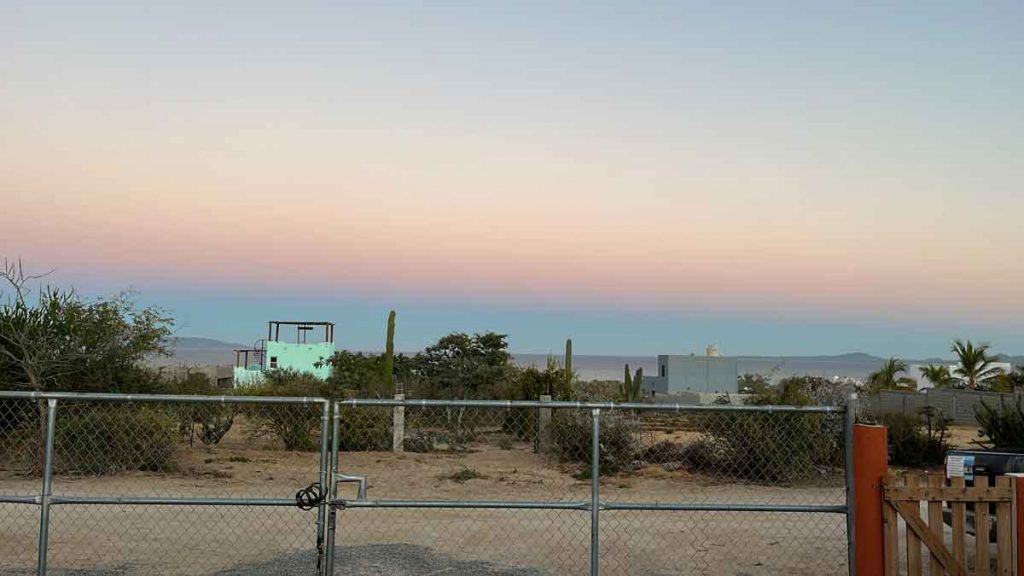
It took us about an hour to park the trailer, not because of any difficulties in doing so, but because we spent so much time talking about sailing this and that, that it got dark by the time we were done.
When we were finally settled in, we climbed to the park’s second floor viewing terrace, cracked open a celebratory beer, and watched the full moon light up the bay, the sounds of Mexican radio heard from the town below.
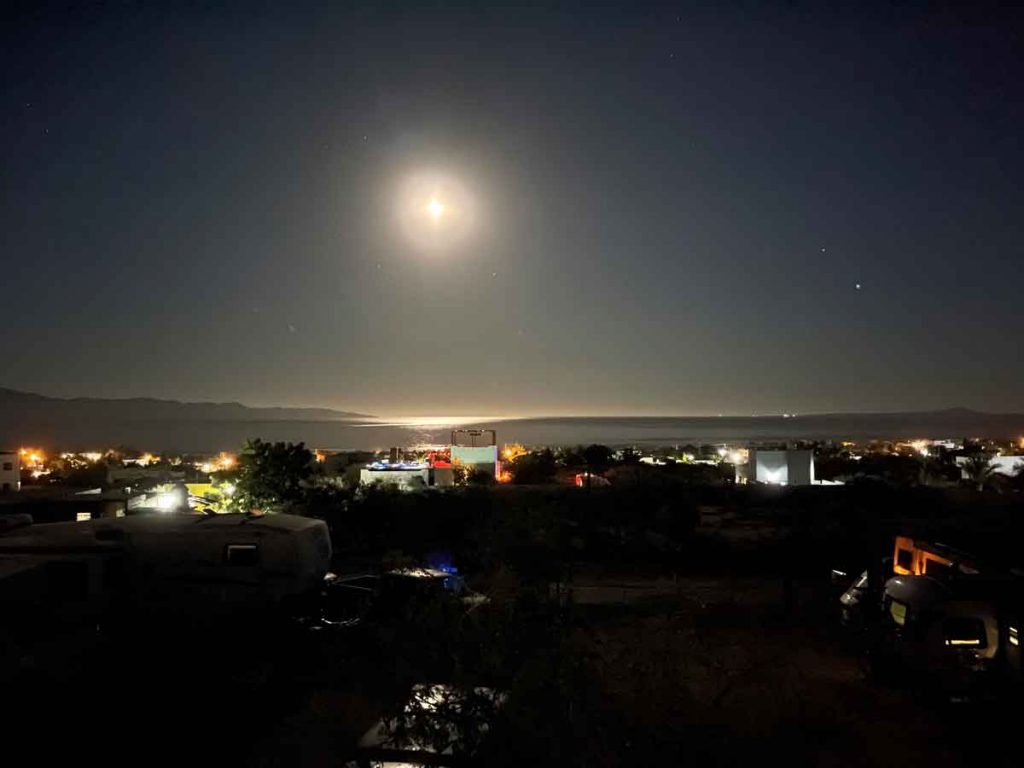


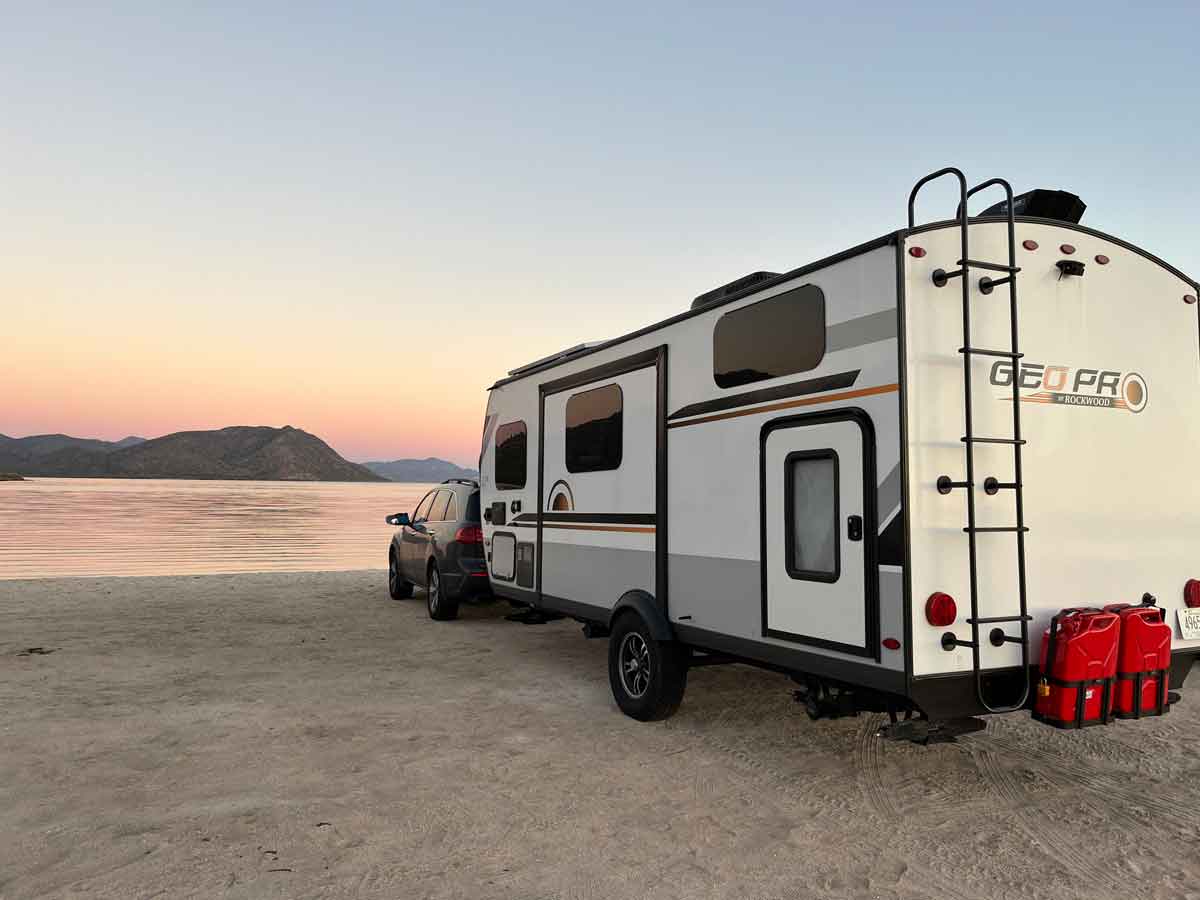
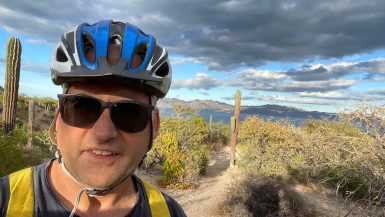
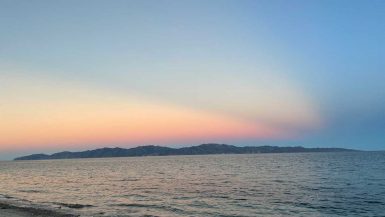
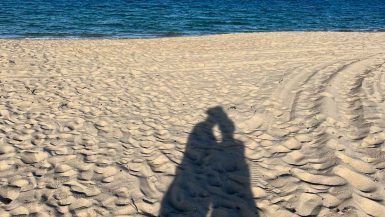
Leave a reply